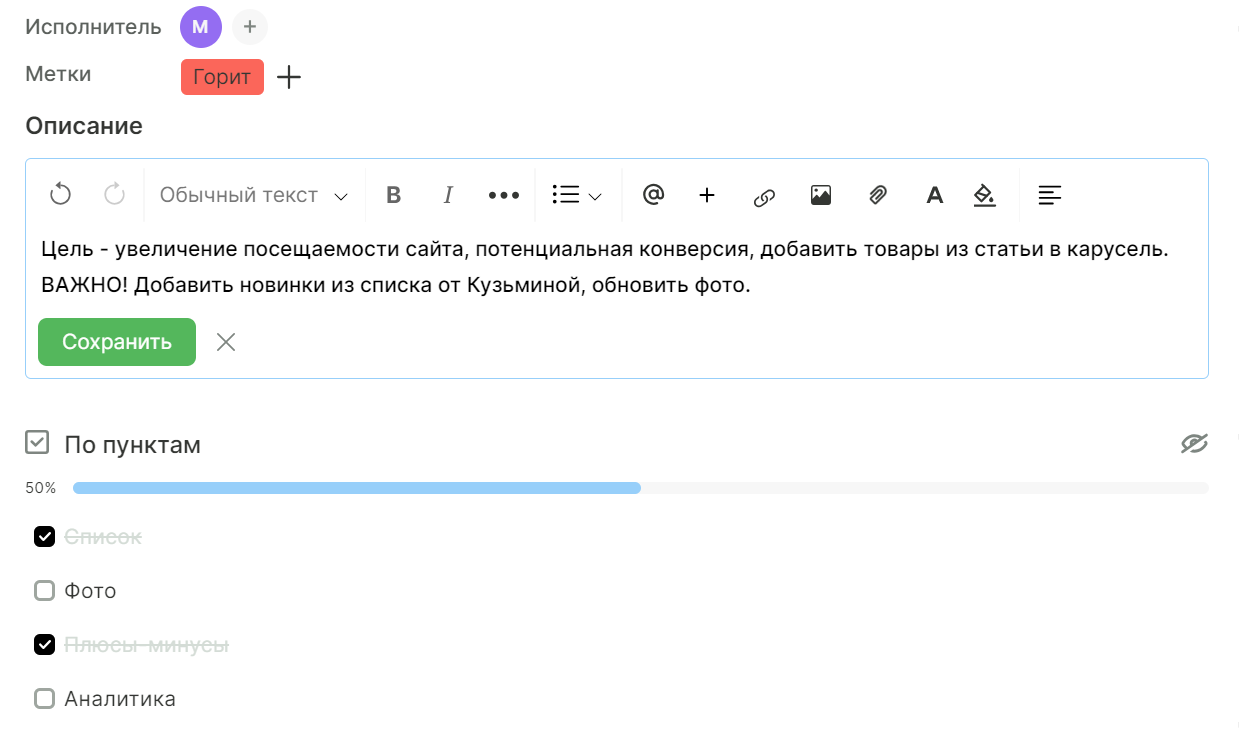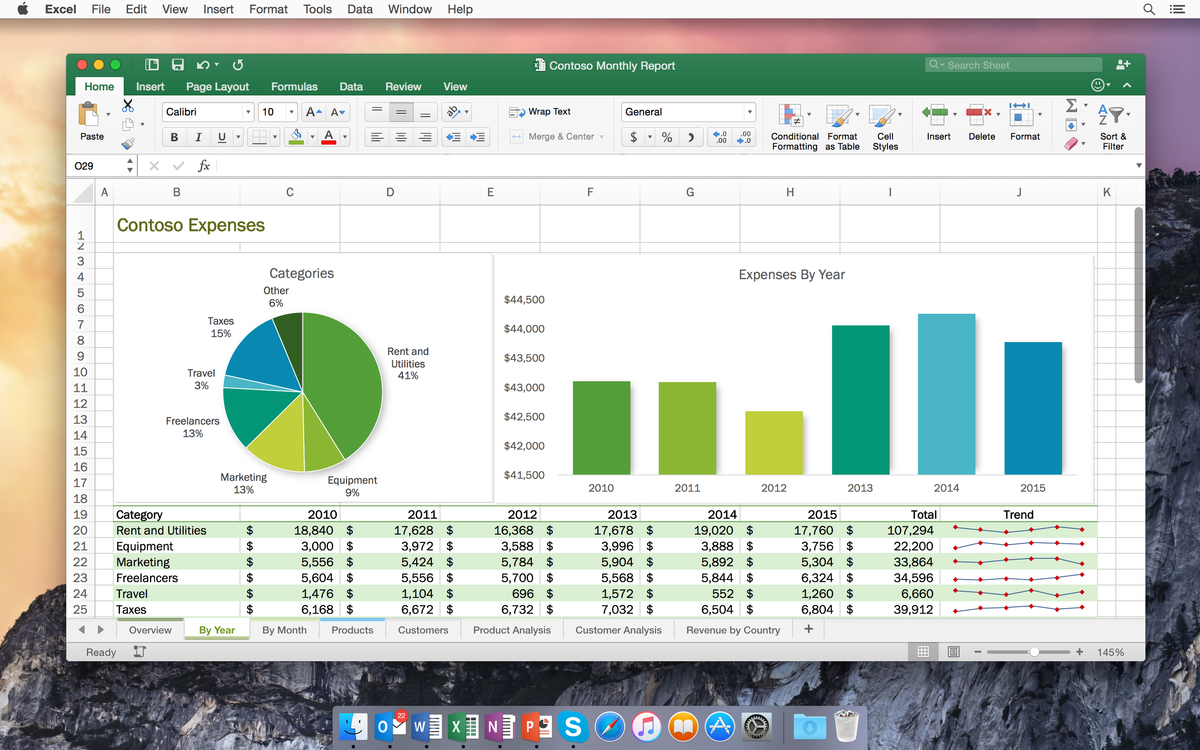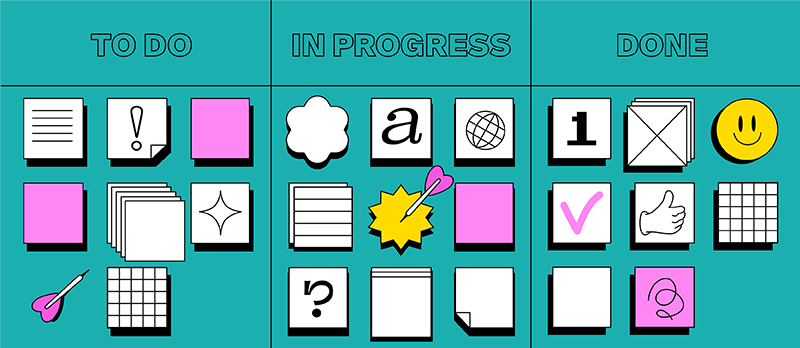How to create an effective content plan for your business

A content plan is a document that spells out what content is to be created, when it will be published, and what goals it should achieve. Having a well-written plan allows you to:
- Coordinate the work of everyone involved in the process, from writers and editors to designers.
- Avoid situations in which content is not published for a long time.
- Think about the structure and content of the content in advance.
In this article, we’ll offer some tips to help you create a content plan.
Define objectives and audience
Before you start creating a content plan, you need to define your main objectives. Without a clear understanding of what you want to achieve, it will be difficult to develop an effective strategy.
Write down what goals you want to achieve. For example, increasing channel subscribers, increasing conversions or brand awareness, and building customer relationships. Then find your audience to create content that is engaging and useful.
Figuring out who you should target can be done in five steps:
- Conduct surveys and interviews to get more information. Ask questions about needs, problems, preferences and expectations of the products or services you offer. This will help you get valuable feedback and get to know your customers better.
- Use available information. This could be data from your CRM system, website analytics or social media. Study the demographics and behavioural interests of your audience to understand their profile. It’s also worth looking at views and interactions with existing content.
- Research who your competitors’ CAs are. Analyse their marketing materials, social media and websites to understand who they are trying to interest and attract. But remember, your target audience doesn’t have to be the same as other companies’ audiences — you should aim to find uniqueness and your market segment.
- Describe potential customers in the form of personas. Imagine a persona with names, ages, occupations, and other characteristics. Describe their needs, problems, motivations and area of interest. This will help you create the most relevant content.

Research competitors and trends
Analyse and research industry trends — regularly browse specialist websites and social media to always know what people like and are interested in right now.
The first step is to identify your main competitors — companies that offer similar products or services, operate in the same industry or target the same audience. Research the market and find as many companies as possible that compete with you directly or indirectly. Even a small company can have amazing texts or infographics that show a product from a new angle.
Thoroughly research your competitors’ products and services. Break down what features and benefits their offerings have. Research pricing, including special offers and discounts.
Understand what marketing tactics they use. Analyse competitors’ successful and failed campaigns. Find out what channels they use to promote their products or services. Analyse their messaging, emphasis and unique offerings. This will help you learn what works in the industry and what marketing tools will be useful for you.
Evaluate the quality of their content, design and user experience. Find out what makes their online presence successful or unsuccessful. This will give you the opportunity to stand out and create an effective online strategy.
Explore ready-made content plan templates to understand where to start planning, especially if this is your first project.
Use monitoring and analytics tools to dig deeper into your competitors’ marketing efforts. Study their keywords, search rankings, ad campaigns, and demographics. This will help you think of specific actions to attract and retain customers.

Pay attention to the most popular articles, videos or infographics in the industry and analyse the views and ratings. Try to analyse what it is that makes them attract and retain attention. It’s important to remember that you shouldn’t completely copy someone else’s work — you won’t give your customers anything new, but you can create something of your own based on the available data.
Plan with the goal in mind
The plan should be structured and linked to your objectives. Think through the topics, formats and channels for placement that will help you achieve your goals. Don’t forget to consider seasonal trends and special events that are related to your business. For example, it’s unlikely that many people will want to buy an air conditioner in the middle of winter, so it’s better to target videos and articles about heaters at this time.
When planning, also consider timeframes and resources. Set realistic deadlines so you can release new content regularly without burning deadlines.
Analyse the results and adapt the plan
Analyse performance and review the plan regularly. Study success metrics such as number of views, likes, comments or conversions. Don’t be afraid to experiment and modify the plan to fit your audience and goals.
Don’t forget that what matters most is the cost-to-benefit ratio. If the video was slightly more effective than the text, but it took many times more resources to shoot, was it really effective? Perhaps you should reallocate your team’s efforts in the future and work on three articles instead of one video.
How to use task trackers to create a content plan

Task trackers are tools for task management. They can help you create and visualise your content plan, keeping all projects and deadlines in order.
Here are some tips for using task trackers to make your content plan easier to work with:
Create a separate task for each publication. You can add the following data to its card:
- Subject
- Format
- Date
- Objectives
Assign a person responsible for each task and set realistic deadlines for completion.
It’s also worth adding details to the card that are easy to forget — contacts of people to ask for help, key points that are important to highlight or additional ideas.

Using task trackers to create a content plan allows you to:
- Optimise the work of content creation. A common whiteboard for all employees involved in the project will speed up the exchange of information and ideas.
- Ensure regularity of publication. Task trackers help you monitor the progress of projects and identify possible delays in time to ensure content is published on time.
- Improve quality. Tracking task progress allows you to focus on what’s important and easily organise finished data for analytics.
In conclusion, creating a content plan takes time and effort, but it’s much harder to develop without one. Follow our tips and remember that a successful content plan is an ongoing process that requires constant analyses and adaptation.
MOGU can help with it. Visualise your processes, make plans and implement them now!


